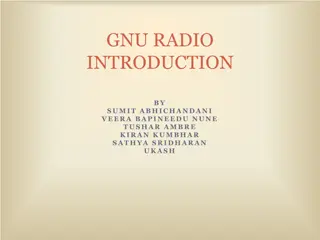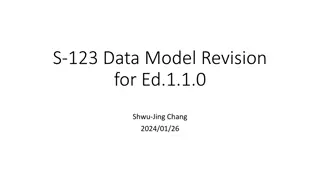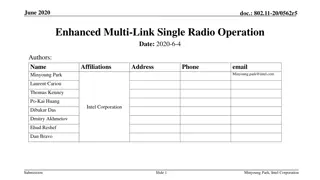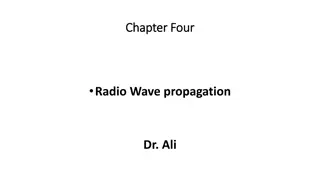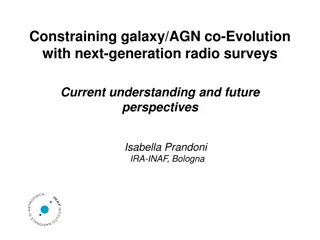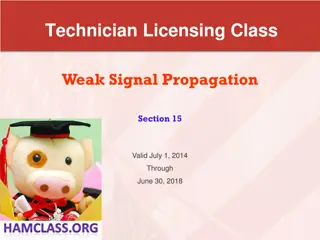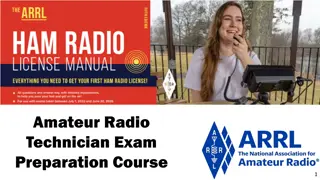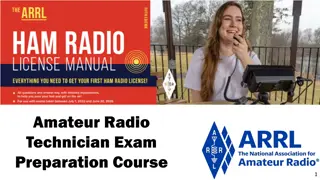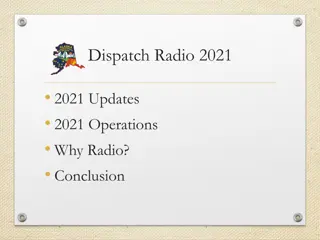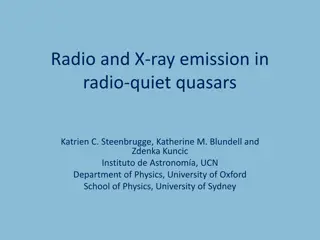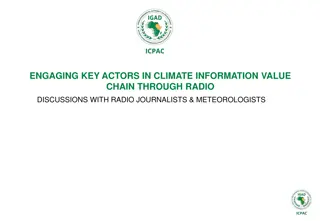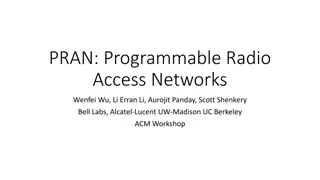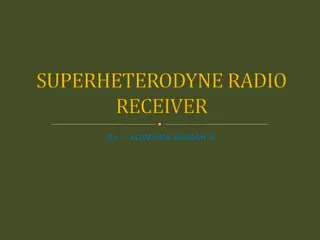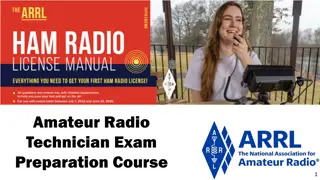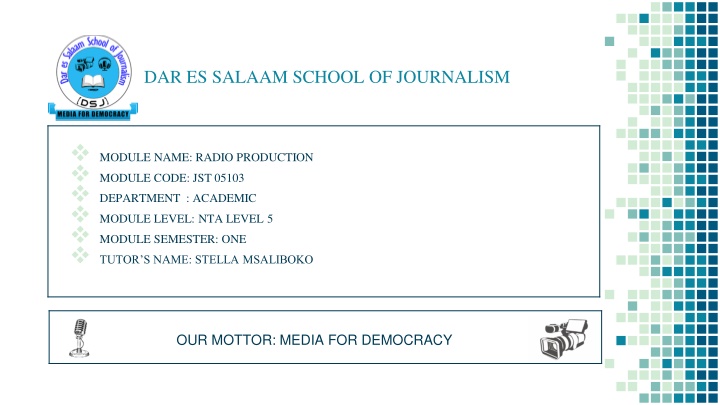
Exploring Radio Production: Roles, Equipment, and Sound Concepts
Dive into the world of radio production with a focus on roles of personnel, recording equipment, studio setups, sound concepts, and more. Understand the basics of sound, waveform patterns, and the transmission of energy through various mediums. Enhance your knowledge of radio broadcasting techniques and etiquette for a fulfilling experience in the field.
Download Presentation

Please find below an Image/Link to download the presentation.
The content on the website is provided AS IS for your information and personal use only. It may not be sold, licensed, or shared on other websites without obtaining consent from the author. If you encounter any issues during the download, it is possible that the publisher has removed the file from their server.
You are allowed to download the files provided on this website for personal or commercial use, subject to the condition that they are used lawfully. All files are the property of their respective owners.
The content on the website is provided AS IS for your information and personal use only. It may not be sold, licensed, or shared on other websites without obtaining consent from the author.
E N D
Presentation Transcript
DAR ES SALAAM SCHOOL OF JOURNALISM MODULE NAME: RADIO PRODUCTION MODULE CODE: JST 05103 DEPARTMENT : ACADEMIC MODULE LEVEL: NTA LEVEL 5 MODULE SEMESTER: ONE TUTOR S NAME: STELLA MSALIBOKO OUR MOTTOR: MEDIA FOR DEMOCRACY
TOPIC 4 TOPIC 1 Explain roles of different personnel in radio production. Describe different types of recording equipment used in production radio content. TOPIC 5 TOPIC 2 Describe a standard setup for Radio Studio. Describe different types of radio programmes. TOPIC 6 TOPIC 3 Describe basic concepts related to sound in production of radio content. Describe relevant etiquette in a broadcast studio
Continued. Use electronic equipment for dissemination of radio content. TOPIC 8 Demonstrate pre-production processes of producing various radio programmes. TOPIC 9 Demonstratew tecniques of handling recording equipment in radio production & broadcasting. TOPIC 10 Use electronic equipment and devices to develop radio scripts. Demonstrate techniques of using recording equipmentin radio production & broadcasting TOPIC 12 Apply electronic equipment in producing radio content. TOPIC 13 Demonstrate techniques of caring recording equipment in radio production & broadcasting. TOPIC 7 TOPIC 11 3
TOPIC 1: SOUND (continued...) What is Sound? Sound is vibrations that travel through the air or another medium and can be heard when they reach a person's or animal's ear. OR Sound is a vibration that typically propagates as an audible wave of pressure, through a transmission medium such as a gas, liquid or solid. In human physiology and psychology, sound is the reception of such waves and their perception by the brain. A wave is a disturbance that transfers energy through matter or space, with little or no associated mass transport. Waves consist of oscillations or vibrations of a physical medium or a field, around relatively fixed locations. 4
Continued. Waveform is a curve showing the shape/layout of a wave at a given time OR A waveform is a variable that varies with time, usually representing a voltage or current. Waveforms are conventionally graphed with time on the horizontal axis. In electronics, an oscilloscope can be used to visualize a waveform on a screen. 5
Continued.. Sound Wave is the pattern of disturbance caused by the movement of energy traveling through a medium (such as air, water, or any other liquid or solid matter) as it transmits away from the cause of the sound. The source is some object that causes a vibration, such as a ringing telephone, or a person's vocal chords. 6
Continued.. Amplitude refers to the length and width of waves, such as sound waves, as they move or vibrate Or the maximum displacement or distance moved by a point on a vibrating body or wave measured from its equilibrium position. ... For a longitudinal wave, such as a sound wave. Frequency is the number of occurrences of a repeating event per unit of time. It is also referred to as temporal frequency, which emphasizes the contrast to spatial frequency and angular frequency. The period is the duration of time of one cycle in a repeating event, so the period is the reciprocal of the fr The different between sound and light is that light travels faster than sound.
TYPES OF SOUND Natural Sound are sounds produced by natural sources in their normal sound scape (environment), also natural sound is unprocessed sound. Humans are a product of nature this could be considered part of nature for example a human vocal. 8
Continued Artificial Sound is a wave or vibration, audible, electromagnetic, or other signal, generated by a human source. The purpose of generating artificial noise, whether intentional or not, may vary, depending on what is considered noise in a particular context or is a created/processed sound by using computer for example sound Effects. 9
USES OF SOUND IN STUDIO SITUATION In communication In Advertisement Act like informer In Music CHARACTERISTICS OF SOUND IN RADIO PRODUCTION Coherence Intensity Background Sound Echo Main sound Sound Effects Loudness 10 Quality
Full name: STELLA XAVIER MSALIBOKO Department: ACADEMIC Email Address: stella23feb@gmail.com Phone number: 0687308675 CONTACT TUTOR IN CHARGE

